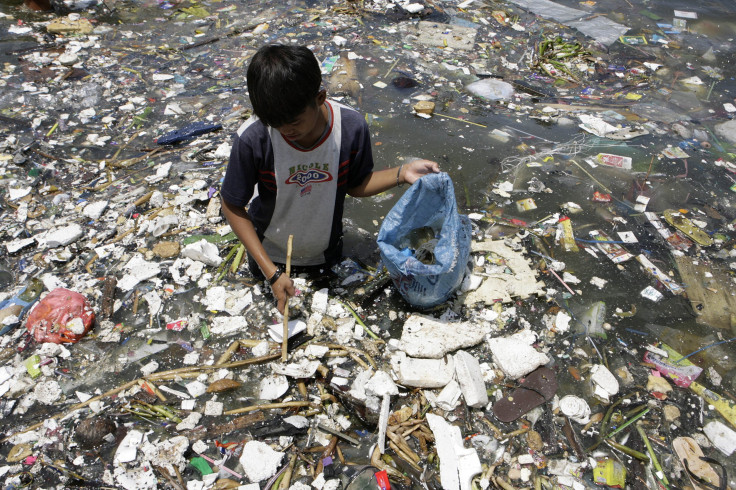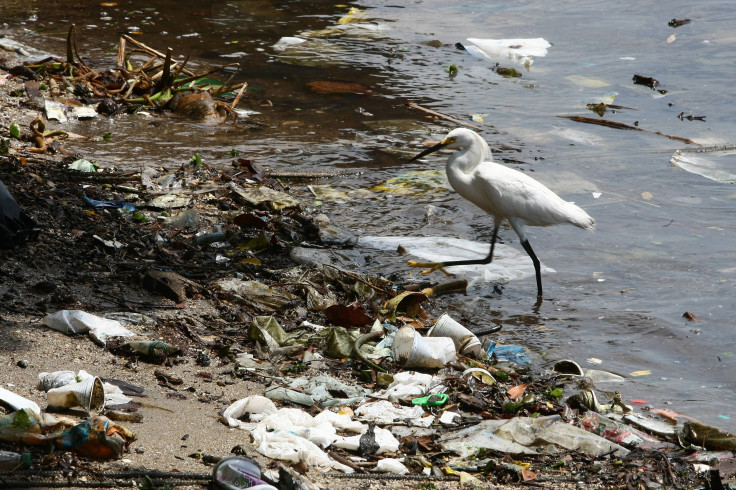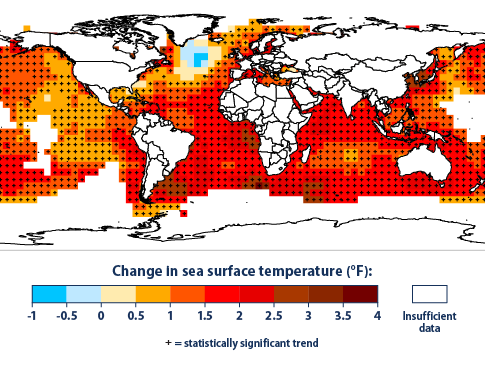Our Plastic Seas: Climate Change And Pollution Will Make Oceans More Hostile By 2050

Trillions of pieces of plastic trash and ever-rising carbon emissions are making the oceans a hostile place for marine life. Birds and shellfish are dying off and coral reefs are vanishing, threatening to drastically change the ocean landscape in the next few decades unless we put the brakes on pollution, scientists warn.
In the latest sign of this threat, 99 percent of the world’s seabird species -- including penguins and albatrosses -- are expected to suffer from plastic ingestion by 2050, according to a study published this week in the journal PNAS. Already 60 percent of seabird species have some kind of plastic in their gut, such as bags, bottle caps and fibers from synthetic clothes. That’s up from just a tiny fraction of seabirds in the 1960s, before single-use items and plastic packaging came to dominate the consumer landscape.
“For the first time, we have a global prediction of how wide-reaching plastic impacts may be on marine species, and the results are striking,” said Chris Wilcox, who led the study and is a senior research scientist at the Commonwealth Scientific and Industrial Research Organization in Australia. “This is a huge amount, and really points to the ubiquity of plastic pollution.”

Nearly 5.25 trillion pieces of plastic garbage, weighing roughly 269,000 tons, may be floating in the world’s oceans, scientists from the 5 Gyres Institute found in December. Seabirds can help researchers monitor the scope of the plastic problem, since they travel across wide swaths of water and forage for food to bring back to their young. By ingesting plastic, birds can not only suffocate or get infections but also absorb the toxic chemicals into their bloodstream, which they can pass on to their offspring, leading to a sicklier generation of birds.
The same goes for turtles, seals, fish -- and ultimately people, who risk ingesting toxic plastic particles that rise through the food chain.
As plastic piles up in the oceans, greenhouse gas emissions are building in the atmosphere and oceans, causing the planet’s air and water temperatures to warm and turning oceans more acidic.
Since 1901, global average surface temperatures have risen at an average rate of 0.15 degrees Fahrenheit per decade, with the largest jumps seen in the past three decades. Worldwide, 2014 was the warmest year on record, and the 2005-2014 period was the warmest decade since record-keeping began. Sea surface temperatures have gained an average rate of 0.13 degrees Fahrenheit per decade since 1901.

As a result, the Arctic sea ice is rapidly melting, threatening to shrink the populations of walruses and other ice-bound mammals. By 2050, summers in the Arctic may be completely ice-free, scientists with the National Oceanic and Atmospheric Administration (NOAA) have projected.
Walruses typically ride on ice sheets in the shallow feeding areas of Alaska’s Chukchi Sea, where they hunt for shellfish and raise their young. Last fall, record-low ice levels forced more than 35,000 walruses to “haul-out” on beaches in northwestern Alaska -- the largest gathering of walruses ever recorded. With even less ice in their future, stranded walruses will have a harder time finding food and will face deadly stampedes due to crowding, which could spur a significant population decline in coming decades.
Whales may not have it much better. Warming water temperatures are causing toxic algae blooms to form in the ocean, which whales are prone to ingest during the summer feeding season. U.S. ocean experts suspect the recent die-off of 30 large whales in the Gulf of Alaska -- an unusually high amount for a narrow time frame -- may be linked to a “blob” of warm water and algae blooms lingering in the North Pacific, although NOAA has not yet formally investigated the deaths.

Yet coral reefs may suffer worst of all. Already 75 percent of the underwater ecosystems are threatened by overfishing, coastal development, local pollution and “coral bleaching,” which happens when warmer water stresses the coral and turns it into lifeless skeletons. Add to that the rising effects of climate change, and nearly all the world’s coral reefs will be at risk by 2050, NOAA scientists found.
Oceans with fewer birds, walruses and reefs is more than a grim outlook for the planet’s ecosystems. Coastal economies also will suffer. Commercial fisheries will dry up, oyster farms could disappear, shorelines will lose natural protection against deadly storm surges, and tourism will plummet.
President Barack Obama warned of such threats at a State Department climate conference in Anchorage, Alaska, Monday. “Few things can have as negative an impact on our economy as climate change,” he said in his speech.
© Copyright IBTimes 2024. All rights reserved.





















